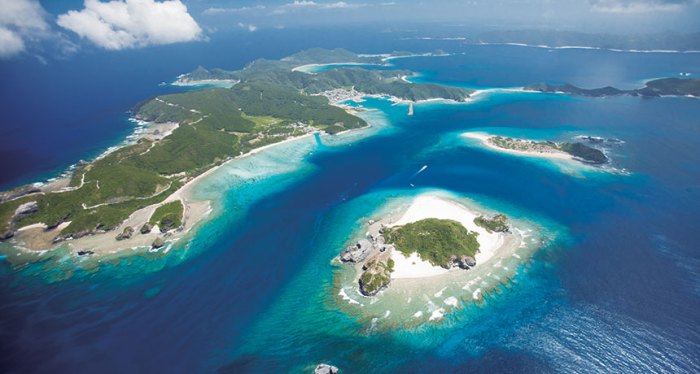
Embark on a journey through sustainable beach tourism experiences, where crystal-clear waters and golden sands meet eco-friendly practices that promise unforgettable adventures for nature enthusiasts and beach lovers alike.
Learn about the harmony between responsible travel and preserving beach ecosystems, ensuring a brighter future for our beloved coastal destinations.
Sustainable beach tourism experiences

Sustainable beach tourism focuses on minimizing the negative impact of tourism activities on the environment and local communities while maximizing the benefits for all stakeholders involved.
Examples of eco-friendly practices in beach tourism
- Implementing waste management strategies to reduce plastic pollution on beaches.
- Promoting responsible water usage and conservation to preserve beach ecosystems.
- Supporting local conservation projects and initiatives to protect marine life.
- Encouraging tourists to participate in beach clean-up activities to maintain the cleanliness of the beach.
Importance of preserving beach ecosystems for sustainable tourism
Preserving beach ecosystems is crucial for ensuring the long-term sustainability of beach tourism. A healthy ecosystem supports biodiversity, provides natural resources, and contributes to the overall well-being of local communities.
Mountain Travel

Mountain travel offers unique experiences such as breathtaking landscapes, opportunities for outdoor activities like hiking and skiing, and a chance to connect with nature at higher altitudes. However, it also presents challenges in terms of conservation, waste management, and protecting fragile ecosystems.
Sustainable Practices in Mountain Travel
When comparing sustainable practices in mountain travel with beach tourism, one key difference is the need to minimize the impact of human activities on high-altitude environments. This includes reducing carbon emissions from transportation, implementing waste management strategies to preserve pristine landscapes, and supporting local communities in mountain regions.
- Utilizing eco-friendly modes of transportation such as electric vehicles or public transit to reduce carbon footprint.
- Implementing waste reduction and recycling programs to keep mountain environments clean and free of pollution.
- Supporting local conservation initiatives and eco-friendly accommodations to promote sustainable tourism practices.
Initiatives for Conservation in Mountain Tourism
Various initiatives promote conservation in mountain tourism, aiming to protect natural habitats, preserve biodiversity, and ensure the long-term sustainability of mountain destinations.
- Establishing national parks and protected areas to safeguard unique ecosystems and wildlife species.
- Encouraging responsible tourism practices through education and awareness programs for visitors and local communities.
- Collaborating with environmental organizations and government agencies to implement conservation projects and sustainable development plans in mountain regions.
Desert Travel
Desert travel offers a unique and captivating experience for tourists seeking adventure in arid landscapes. Implementing sustainable tourism practices in desert environments is essential to preserve the delicate ecosystem and cultural heritage of these regions while providing meaningful experiences for visitors.
Sustainable Tourism Implementation
In desert environments, sustainable tourism can be achieved through responsible resource management, minimizing waste, and supporting local communities. By promoting eco-friendly accommodations, renewable energy sources, and water conservation practices, tourists can enjoy the beauty of the desert while minimizing their environmental impact.
Cultural Significance
Desert travel holds significant cultural importance for many indigenous communities who have thrived in these harsh landscapes for centuries. By engaging with local guides and participating in cultural activities, tourists can gain a deeper understanding of desert traditions and heritage, fostering mutual respect and appreciation for diverse cultures.
Sustainable Infrastructure Development
Examples of sustainable infrastructure development in desert tourism include the use of solar panels to power accommodations, eco-friendly architecture that blends with the natural landscape, and initiatives to protect endangered species and plant life. By investing in sustainable infrastructure, desert destinations can attract conscientious travelers who value environmental stewardship.
Arctic & Polar Travel
In recent years, the Arctic and polar regions have been significantly impacted by climate change, leading to melting ice caps, rising sea levels, and changes in wildlife habitats. These changes have also affected tourism in these fragile ecosystems, prompting the need for sustainable travel practices to preserve these unique environments.To ensure the protection of Arctic and polar regions, sustainable travel practices are essential.
This includes minimizing carbon footprints by opting for eco-friendly transportation methods, supporting local communities through responsible tourism initiatives, and respecting wildlife and natural habitats. By following these practices, tourists can experience these regions while minimizing their impact on the environment.
Impact of Climate Change
Climate change has had a profound effect on the Arctic and polar regions, leading to the loss of sea ice, changes in wildlife migration patterns, and alterations in the overall ecosystem. These changes have not only impacted the environment but have also influenced the way tourists experience these regions.
- Melting ice caps have led to a decrease in habitat for polar bears and other wildlife, affecting the wildlife viewing opportunities for tourists.
- Rising sea levels have threatened coastal communities and traditional indigenous ways of life, highlighting the importance of sustainable tourism practices in these regions.
- Changes in weather patterns have made it more challenging to predict conditions for outdoor activities, impacting the overall tourist experience.
Role of Indigenous Communities
Indigenous communities play a crucial role in promoting sustainable tourism in the Arctic. Their traditional knowledge and connection to the land can offer valuable insights into preserving the environment and promoting responsible travel practices.
- Indigenous communities can provide unique cultural experiences for tourists, showcasing traditional practices and ways of life in the Arctic.
- By involving indigenous peoples in tourism initiatives, local economies can benefit, leading to increased support for conservation efforts and community development.
- Collaboration with indigenous communities can help raise awareness about the importance of preserving Arctic ecosystems and the need for sustainable travel practices.
Jungle & Rainforest Travel
When it comes to jungle and rainforest travel, sustainable tourism initiatives are crucial to protect these biodiverse ecosystems for future generations to enjoy. Responsible tourism practices in these destinations play a vital role in preserving the unique flora and fauna found in these areas.
Importance of Biodiversity Conservation
- Preserving the rich biodiversity of the rainforests is essential for maintaining the delicate balance of ecosystems and supporting the livelihoods of local communities.
- By promoting sustainable tourism practices, we can help minimize the negative impact of human activities on these fragile environments.
- Conservation efforts in jungle and rainforest destinations also contribute to combating climate change by protecting carbon sinks and reducing deforestation.
Responsible Wildlife Viewing Practices
- When observing wildlife in their natural habitats, it’s important to keep a safe distance and avoid disrupting their behavior.
- Respect the animals’ space and refrain from feeding them or engaging in activities that could harm their well-being.
- Choose tour operators that prioritize ethical wildlife encounters and follow guidelines set by conservation organizations to ensure minimal impact on the environment.
Coastal & Beach Travel
When embarking on a beach vacation, it’s essential to prioritize sustainable practices to ensure the preservation of these precious coastal ecosystems for future generations.
Tips for Sustainable Practices
- Avoid stepping on or touching coral reefs, as they are delicate and crucial to the marine ecosystem.
- Use reef-safe sunscreen to prevent harmful chemicals from damaging coral reefs.
- Support local businesses and communities to promote sustainable tourism and economic growth.
- Dispose of trash properly and participate in beach clean-up initiatives to reduce pollution.
Significance of Coral Reef Protection
Coral reefs play a vital role in coastal tourism by attracting a diverse range of marine life and providing natural protection against coastal erosion. Protecting coral reefs is essential to maintaining the health and beauty of coastal destinations.
Minimizing Plastic Pollution
- Bring reusable water bottles and shopping bags to reduce single-use plastic waste.
- Avoid using plastic straws and utensils by opting for eco-friendly alternatives.
- Participate in beach clean-up events and encourage others to dispose of trash responsibly.
Final Review
Dive deeper into the world of sustainable beach tourism experiences, where every footprint counts towards protecting our shores and marine life, making your next beach vacation not only memorable but also impactful.
Top FAQs
How can I contribute to sustainable beach tourism?
You can support local eco-friendly businesses, reduce plastic waste, and participate in beach clean-up activities during your visit.
Why is preserving beach ecosystems important for sustainable tourism?
Preserving beach ecosystems ensures the longevity of coastal biodiversity, supports local communities, and maintains the natural beauty of beach destinations for future generations.
What are some examples of eco-friendly practices in beach tourism?
Eco-friendly practices include using biodegradable sunscreen, reducing water usage, supporting sustainable seafood restaurants, and avoiding single-use plastics.
How does sustainable beach tourism contribute to environmental conservation?
Sustainable beach tourism minimizes negative impacts on the environment, promotes conservation efforts, and educates travelers on the importance of preserving coastal ecosystems.





